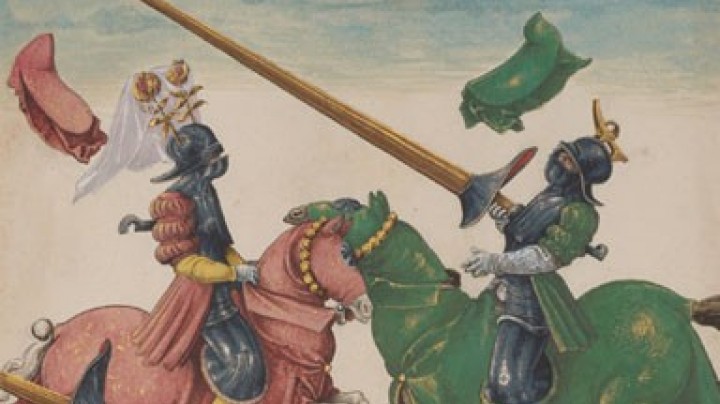Burgundy: a late medieval legend
The Burgundian domains were a rich patchwork of diverse ethnic and cultural traditions. Its political and economic power allied to its enormous cultural charisma made Burgundy one of the Great Powers of late medieval Europe.
Today the Burgundian domains are rather difficult to define geographically as it extended over several regions that today belong to various modern European states. Its historical heartlands lay in France, but later its focus lay on territories now belonging to modern-day Belgium, Holland and Luxembourg.
The ancestral dukedom of Burgundy with its old capital in Dijon, lay in the east of the kingdom of France. The French king John the Good (1319–1364) gave the dukedom in appanage to his fourth son, Philip the Bold (1342–1404), as a crown fief, in 1363. The dukes of Burgundy trace their descent from Philip and the collateral line of the French royal dynasty of Valois.
The ascent of the dukes of Burgundy was decisively furthered by Philip the Bold’s marriage to Margaret of Flanders (1369), who brought large territories into the union. These included Flanders, the counties of Nevers and Artois as well as the free county of Burgundy (Franche Comté), which belonged to the Holy Roman Empire.
While under Philip’s son John the Fearless (1371–1419) the domains were not extended to any great degree, the reign of Philip the Good (1396–1467) saw further expansion through acquisition, conquest and inheritance. He enlarged his dominions with the duchy of Brabant and further territories in the northern Netherlands (Holland, Zeeland and Utrecht) and on the French Atlantic coast (Picardy) as well as the duchies of Luxembourg and Limburg.
Under Charles the Bold (1433–1477) territorial expansion came to a close with the annexation of the see of Liège, the duchy of Guelders and – at least for a time – the duchies of Lorraine and Bar, which was intended to create a land bridge between Burgundy proper and the Netherlands. The attempt to annex further territories on the middle Swabian reaches of the Rhine was thwarted by the Swiss Confederates. The conflict with the dukes of Lorraine ended tragically: Charles fell in the Battle of Nancy in 1477, and with this the House of Burgundy became extinct in the male line.
The expansion of the Burgundian domains was a late medieval success story: within three generations a powerful complex of territories had been created. A special feature of the Burgundian domains was their position between the power blocs of France and the Holy Roman Empire, both in a geographical sense and from the perspective of feudal law. The dukes of Burgundy, who were descendants of the French royal dynasty and vassals of the king of France, emancipated themselves from French subjection thanks to the weakness of France during the Hundred Years’ War with England. The king’s authority had also been weakened by rivalries within the branches of the Valois dynasty, and Burgundy benefited from this power vacuum. Their position in regard of the Holy Roman Empire, of which they were also vassals, was similarly assertive. The dukes of Burgundy constituted an independent political factor to be reckoned with, and shaped the culture of their times to an even greater degree.
The realm of the dukes of Burgundy was defined by its heterogeneity, for the territories it was composed of were ethnically and culturally various. While French was the language used at court, the duke’s subjects spoke French, Flemish, Dutch or German depending on the region they came from. The duchy encompassed the chiefly agrarian regions in the heartland as well as the Dutch seaports on the North Sea. Also subject to the dukes were ecclesiastical territories such as the bishopric of Liège and the rich trading cities of Flanders. Holding these different territories together under one rule presented a challenge.
It is significant that there was no dominant capital city. In the third generation the focus of rule shifted from the rural eastern French heartlands around Dijon to the Low Countries with their flourishing urban culture. Ghent and later Brussels became centres of Burgundian rule. Created in less than a century, this assemblage of domains consisted of regions that had no historical ties; only the ruler at their head could guarantee cohesion. This made the symbolism of power important. The rich culture of the ducal court that underlay the legend of Burgundy served as a medium to display their power and status and to anchor them in the consciousness of contemporary Europe.















